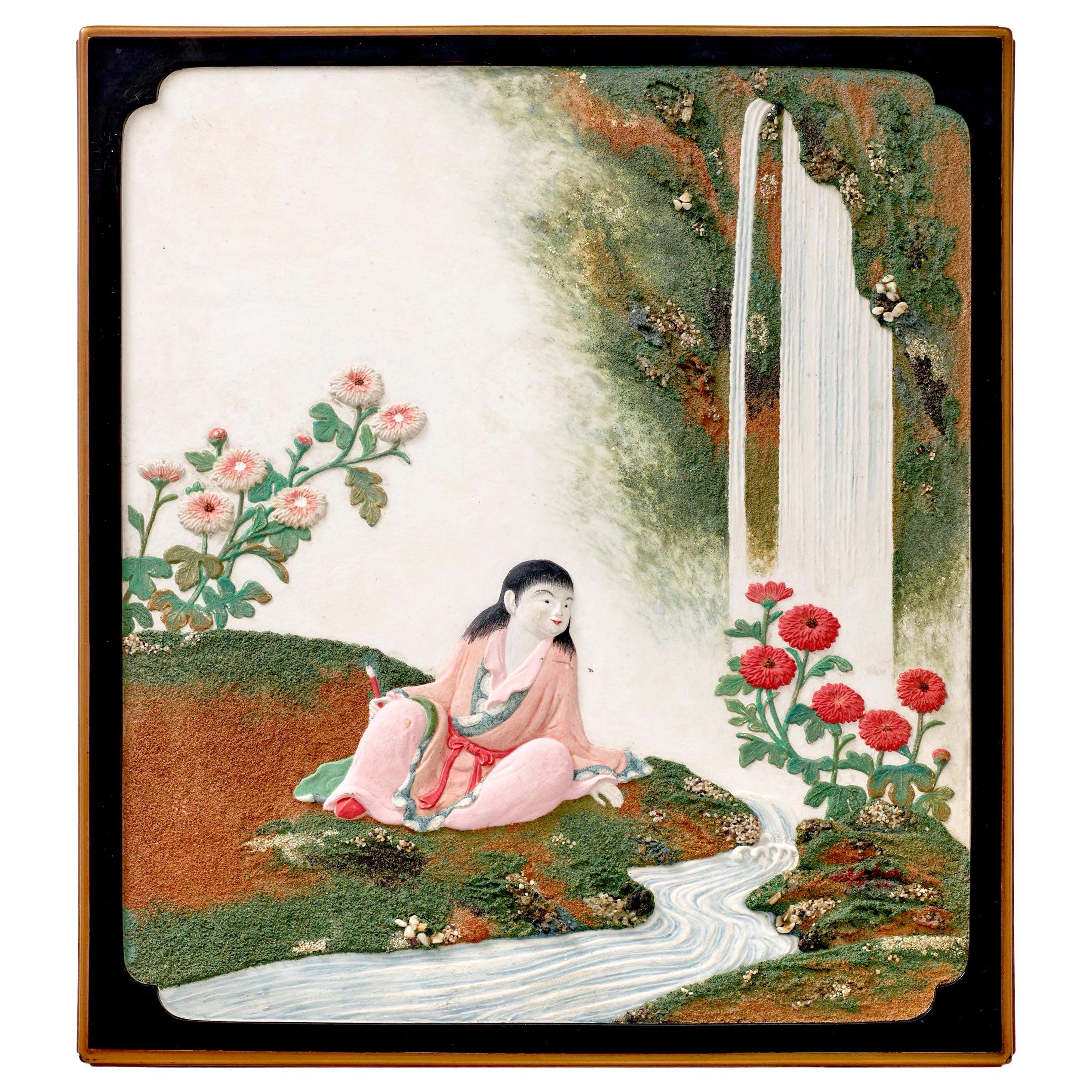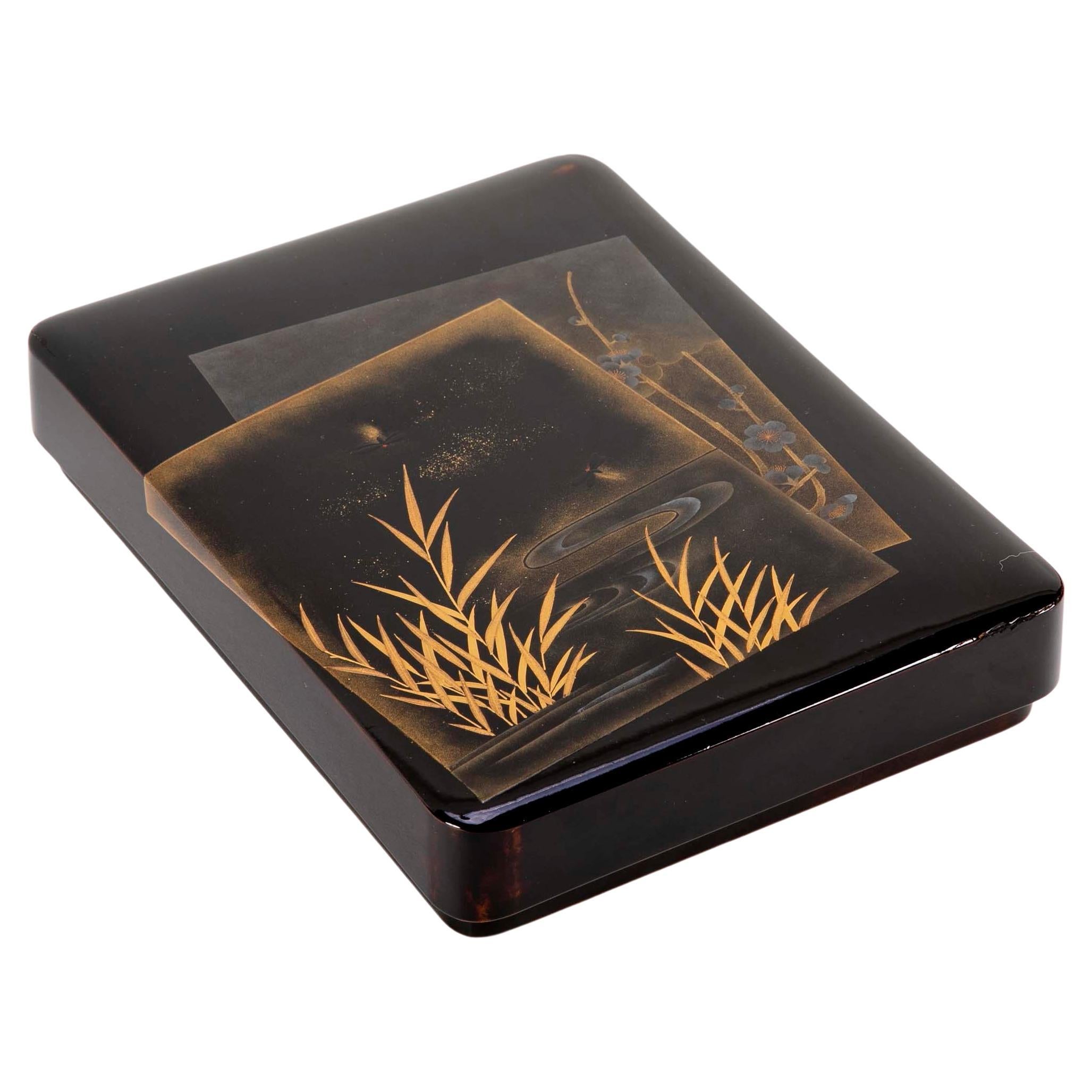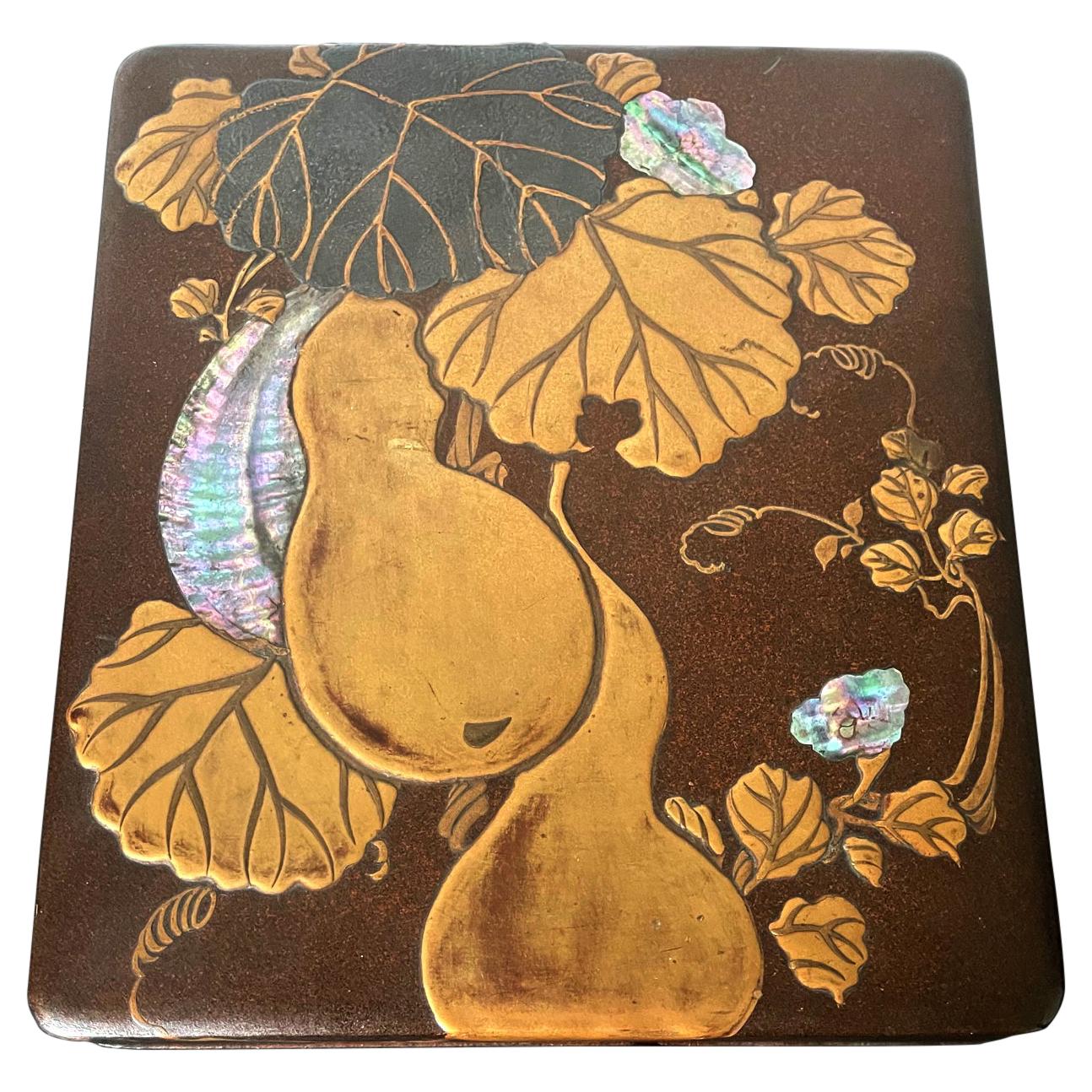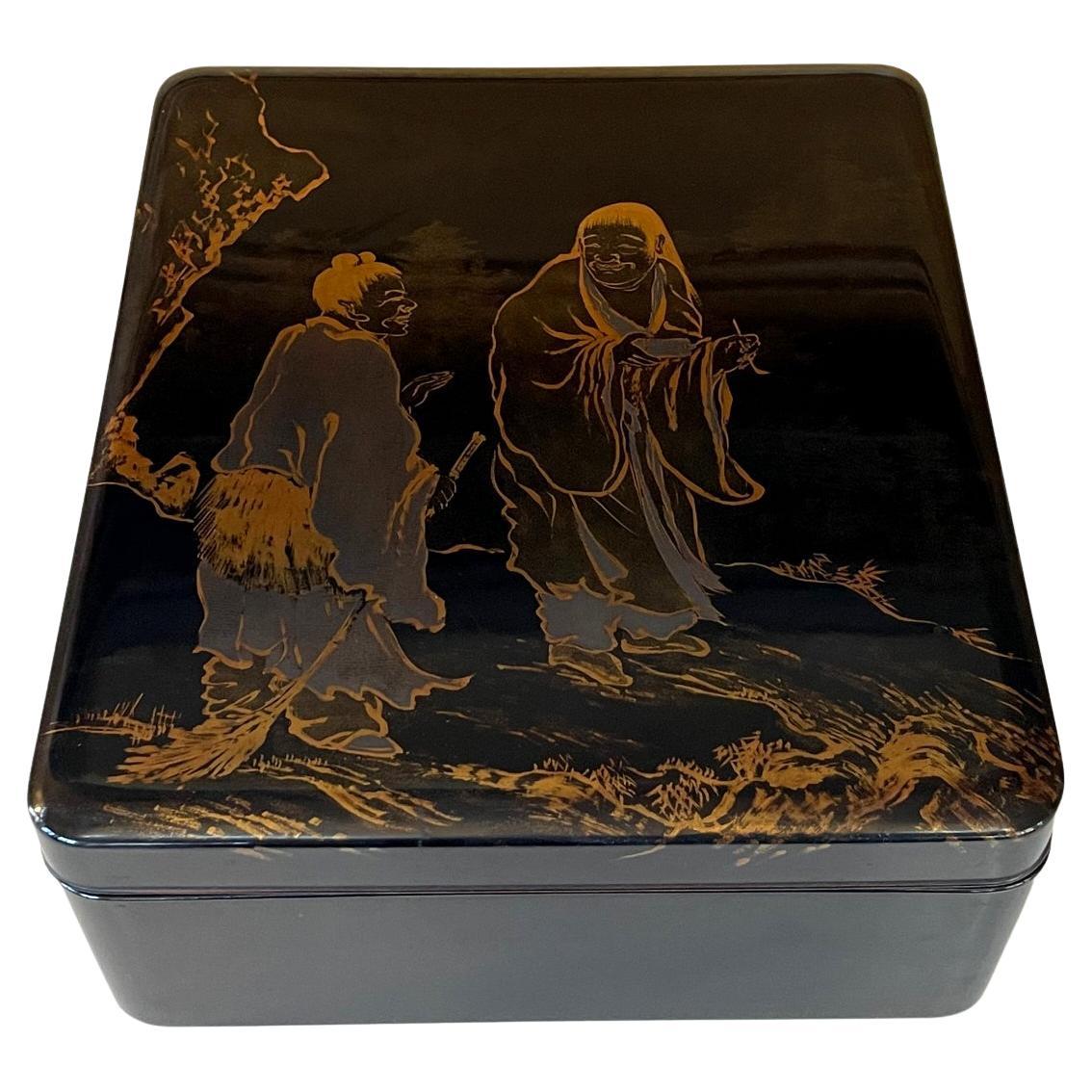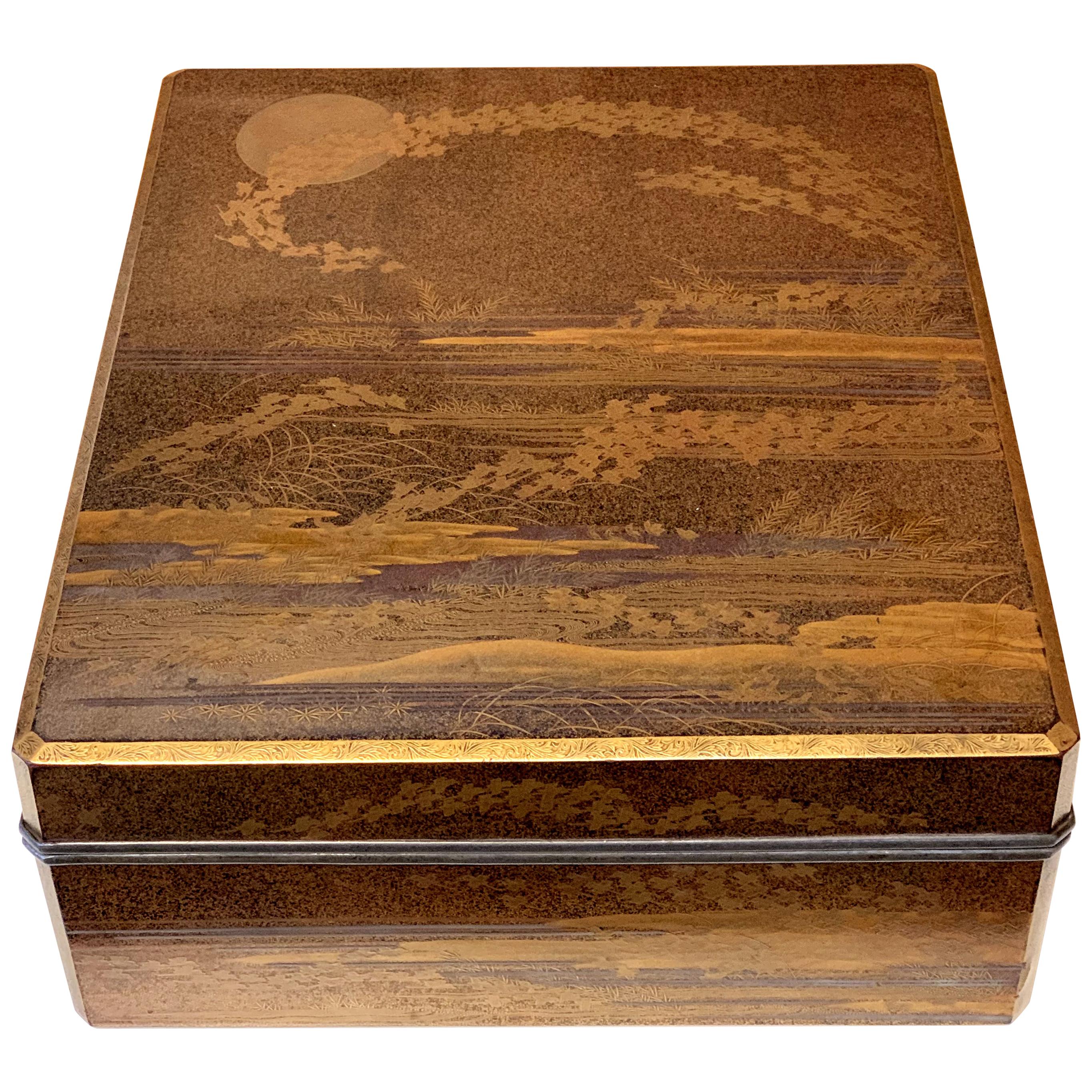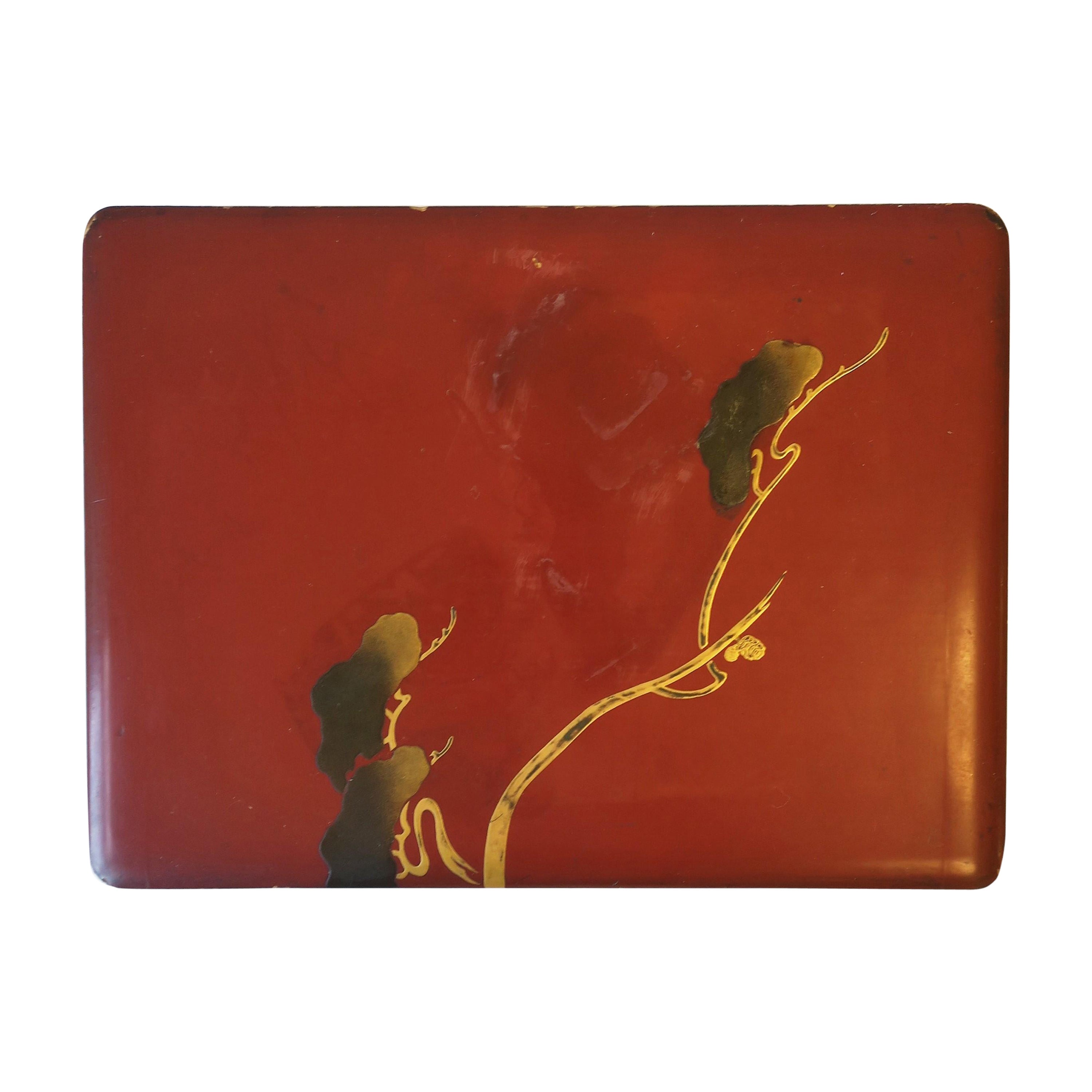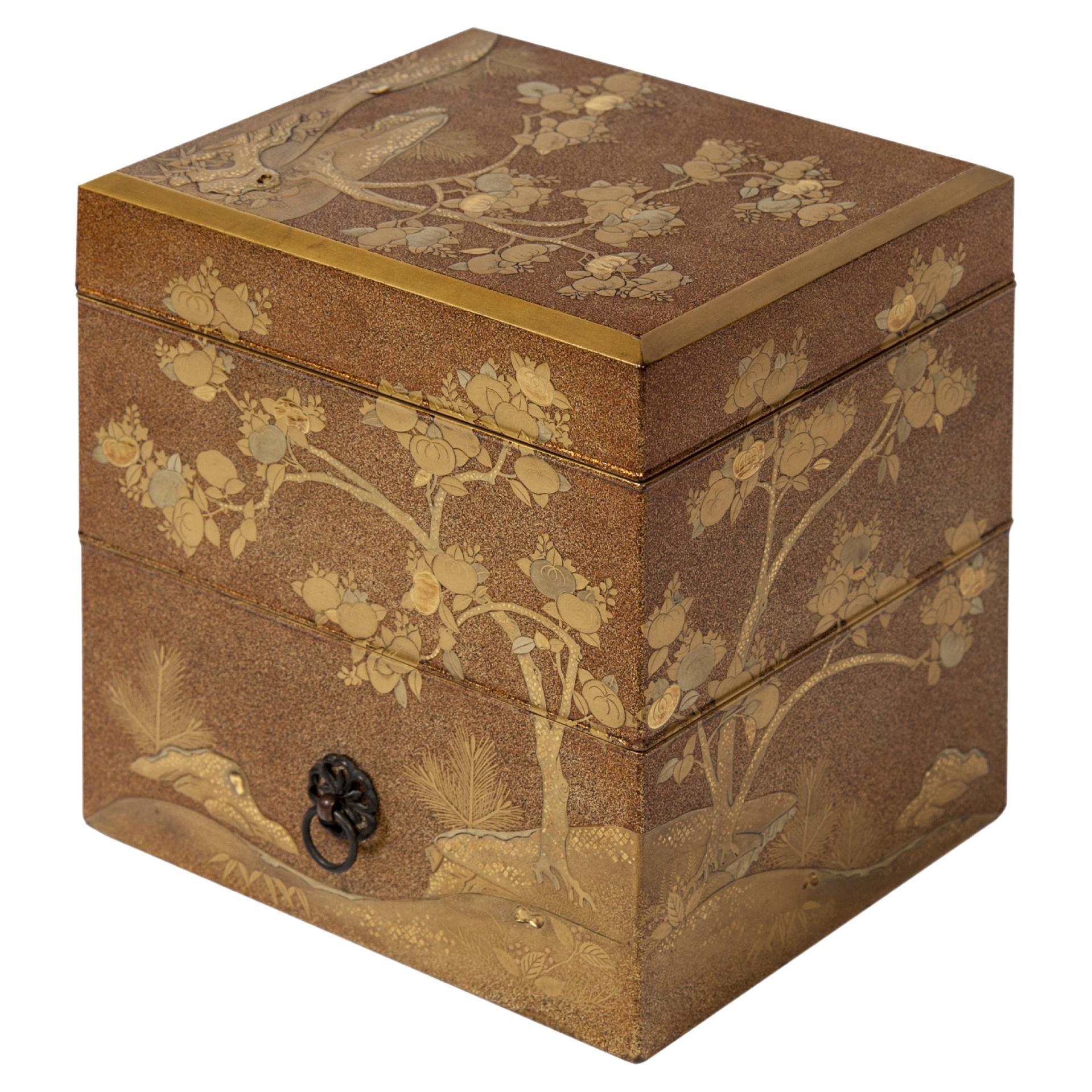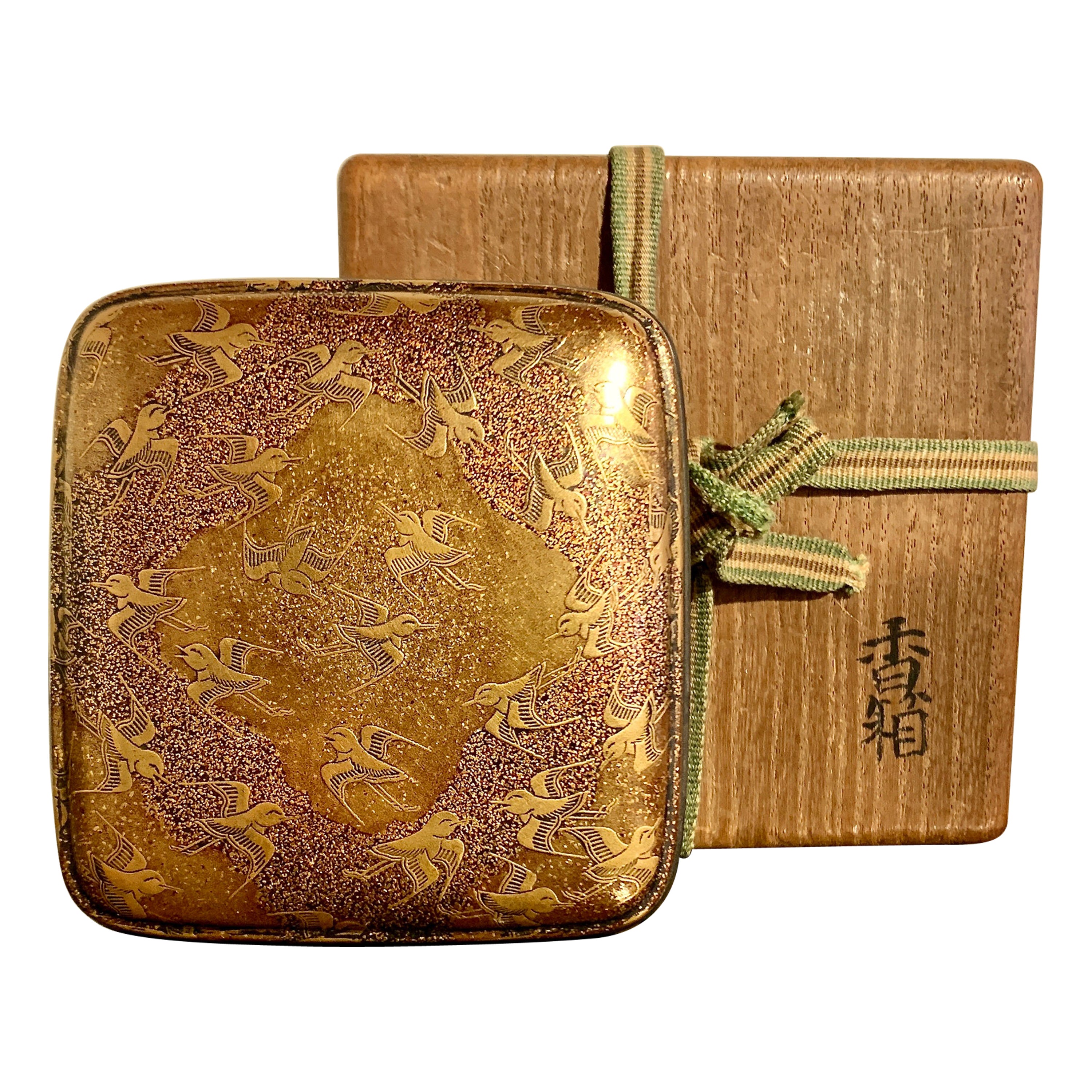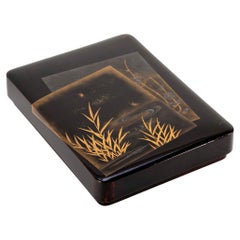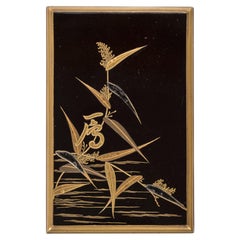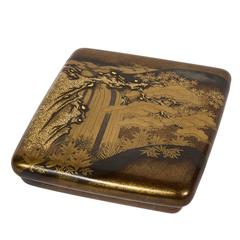
Edo Japanese Lacquered Suzuribako 'Writing Box'
View Similar Items
1 of 5
Edo Japanese Lacquered Suzuribako 'Writing Box'
About the Item
- Dimensions:Height: 1.97 in (5 cm)Width: 9.06 in (23 cm)Depth: 9.85 in (25 cm)
- Materials and Techniques:
- Place of Origin:
- Period:
- Date of Manufacture:1790
- Condition:
- Seller Location:Paris, FR
- Reference Number:Seller: 2016-3811stDibs: LU104866149523
You May Also Like
- Rare Japanese Lacquer Writing Box Suzuribako Meiji PeriodLocated in Atlanta, GAA Japanese Lacquer writing box Suzuribako Meiji Period (1868-1912), likely circa late 19th century. This suzuribako is one of the most unusual boxe...Category
Antique 19th Century Japanese Japonisme Lacquer
MaterialsLacquer
- Black and Gold Lacquer Japanese Suzuribako BoxLocated in Stamford, CT19th century Japanese black and gold lacquer Suzuribako box with firefly and plum blossom design.Category
Antique Late 19th Century Japanese Decorative Boxes
MaterialsLacquer
- Japanese Tiny Suzuribako 'Writing Set'Located in PARIS, FRTiny suzuribako (writing set) in black and gold hiramaki-e lacquer with water plantain (Alisma plantago-acquatica) decoration. Interior in nashi-ji lacquer, with a rectangular water cup...Category
Antique Late 19th Century Japanese Lacquer
MaterialsLacquer
- Japanese Rinpa Style Lacquer Ink Stone Box SuzuribakoLocated in Atlanta, GAA Japanese writing box with ink stone (known as Suzuribako) with exquisite maki-e decoration circa late Meiji to early Taisho period (1890s-1930s)...Category
Early 20th Century Japanese Japonisme Lacquer
MaterialsWood, Lacquer
- Japanese Lacquer Maki-E Tiered Suzuribako and RyoshibakoLocated in Atlanta, GAA Japanese roiro lacquer scholar combo box with an upper tier of inkstone box (Suzuribako) and a lower document box (Ryoshibako) circa 1910-30s (end of Meiji to Showa period). The high glossy box was beautifully decorated with an image of the famously eccentric Buddhist monks Hanshan and Shide (known in Japan as Kanzan and Jittoku). Often as a pair, they have been a popular motif in Japanese Zen painting...Category
Vintage 1920s Japanese Meiji Lacquer
MaterialsStone, Metal
- Large Japanese Lacquer Box Early Edo Period Ex-Christie'sLocated in Atlanta, GAA large lacquer Ryoshibako (Paper box in Japanese) finely decorated with Maki-e circa 17th century early Edo period. The box is of an impressive size and was used to store paper documents. Both sides of the lid were elaborately decorated with maki-e and the edge was befitted with lead rim, an early practice before the silver rim became common later. The interior and base were finished in Nashiji. The night scene on top surface of the lid depicts flocks of chidoris flying in formation from a sea shore swaying with reeds under a full moon, using hiramaki-e in both gold and silver. Ribbons of clouds were achieved with different densities of gold powder. The underside, in contrast, shows a crescent moon in takamakie-e above the sea with ferns and reeds. Chidoris, the plovers, are symbolic in Japanese culture as "thousands of blessings" and longevity. The Namichidori, the pattern in which the chidori flies in the nami (wave) represents the eternal love and safety of couples and families. For detailed references on the historical background and the use of chidoris on lacquerware, see the reference below. This very lacquer box was featured for sale as lot 339 in Christie's London Sale Japanese Art...Category
Antique 17th Century Japanese Japonisme Lacquer
MaterialsWood, Lacquer
Recently Viewed
View AllMore Ways To Browse
Japanese Writing Box
Japanese Writing Box Lacquer
Antique Japanese Writing Box
Japanese Suzuribako
Japanese Inkstone
Lacquer Fan
Cinnabar Lacquer Furniture
Cinnabar Lacquer
Japanese Lacquered Tray
Chinese Cinnabar
Lacquer Furniture Fan
Japanese Red And Gold Lacquer
Gold Lacquer Tray
Chinese Cinnabar Furniture
Red Cinnabar
Black Japanese Tray
Antique Cinnabar
Red Lacquer Boxes Asian
